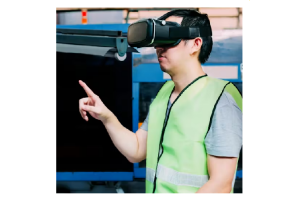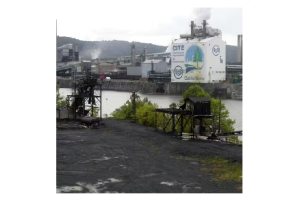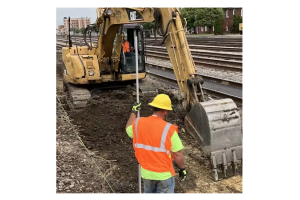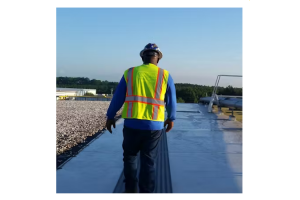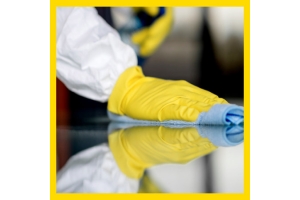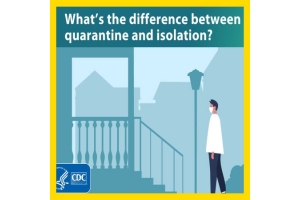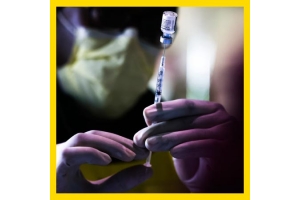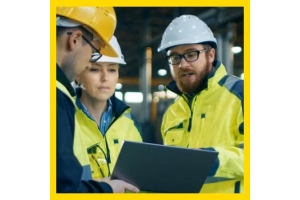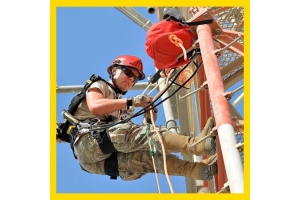Currency
-
October 25, 2020The misconception that coronavirus particles are too small to be filtered by the N95 respirator is corrected in the new set of Frequently Asked Questions.
OSHA published a set of Frequently Asked Questions on October 19 to clarify how N95 respirators protect wearers from coronavirus exposure.
The FAQ combats the incorrect claim that N95 respirators don’t capture particles as small as the virus that causes COVID-19.
The information in the FAQ points out that N95 respirators remove at least 95% of very small particles from the air, and that the virus is part of larger particles made up of materials like water and mucus. The larger particles in question are easily trapped and filtered out by the N95 respirators because of their size.
SOURCE:
https://ohsonline.com/articles/2020/10/21/osha-confirms-effectiveness-of-n95-respirators-in-new-faq.aspx?admgarea=news -
October 25, 2020The Pistoria Alliance Chemical Safety Library platform makes safety hazard information free and available to the public in an effort to reduce incidents and improve worker safety.
A new open access library will make vital reaction safety hazard information available in the hopes of improving the safety of workers in labs and reducing repeat incidents.
CAS, a nonprofit division of the American Chemical Society that specializes in scientific information solutions, and the Pistoia Alliance, a global nonprofit that works to lower barriers to innovation in life sciences research and development, have joined forces to launch the Pistoia Alliance Chemical Safety Library platform.
The library will facilitate data sharing of hazardous and unanticipated chemical reaction information for the global research community. Researchers can access chemical safety incident information -
October 25, 2020Whilst I am eager to explore a host of subject matter for the purpose of compiling an informative yet interesting article, as well as learning something myself along the way, the topic Protective Clothing is rather overwhelming when one considers where to start…
A broad spectrum topic that conjures many different thoughts and views, my personal opinion is to tackle this starting with a couple of stories from the beginning… the origin, how did protective clothing, now known more commonly as Personal Protective Equipment (PPE) come to hold its own and become one of the most lucrative supply chains in industry as we know it today? Following this, and a few tales through history, I will visit a few later day discoveries in terms of PPE, as well as a couple of experiences on my home turf.
Stories originate from all over the world that shed a little light on how it has become such a significant role player across all industries in terms of worker health and safety.
-
October 25, 2020For industrial facilities to meet the needs of a challenging environment and maintain a sound respiratory protection program, it’s critical that the SCBA used deliver performance – whether needed for standby emergencies or everyday work. One of the most important considerations for respiratory protection is compatibility. SCBA that allow for the use of the same cylinder across multiple platforms throughout your fleet, that can be integrated with other NFPA products you might have, and a facepiece that allows for APR use with a variety of cartridge options is key to ensuring your respiratory protection program is comprehensive.
Facepiece Compatibility
Key factors to consider for SCBA facepieces include:
● Is it lightweight and compact?
● Does it provide low breathing resistance on air and off?
● Is there an adapter available -
October 18, 2020Is six feet really the limit for person-to-person COVID-19 transmission?
Unfortunately for businesses, the answer to that question seems to depend on who you ask.
Recently, it may also have depended on when you ask.
On Sept. 18, the CDC posted on its website that the coronavirus is transmitted mainly through the air.
This would mean the virus can travel more than six feet, particularly indoors.
Four days later, the CDC removed the language from its website, saying the post was premature and they were still reviewing the issue.
(Update: On Oct. 5, the CDC updated its webpage on how the coronavirus is spread. “There is evidence that under certain conditions, people with COVID-19 seem to have infected others who were more than six feet away,” the updated Web page states. “These transmissions occurred within enclosed spaces that had inadequate ventilation. Sometimes the infected person was breathing heavily, for example while -
October 18, 2020Dust particles become airborne during indoor metalworking processes like welding and plasma cutting. They also become airborne during the manufacturing and processing of food, chemicals, pharmaceuticals and other dry products. Some of these particles are toxic and/or combustible, so it is important to shield workers, products and expensive equipment from them. Here are the most frequently asked questions about controlling dangerous dusts in order to maintain a safe work environment.
Q. What makes a dust dangerous?
When products are manufactured indoors, small particles often become airborne and have the potential to do serious harm to people, products, equipment and/or facilities. Dusts that are combustible can cause fires and explosions. Other dusts can contain ingredients that are toxic when swallowed or inhaled. Others can cross-contaminate other products that are manufactured in the same facility. When combustible dusts are collected from -
October 18, 2020On September 14, the National Institute for Occupational Safety and Health (NIOSH) issued a request for information and comment on the deployment to and use of elastomeric half-mask respirators (EHMRs) by emergency medical services (EMS) organizations and in healthcare settings during the ongoing coronavirus diseases 2019 (COVID-19) pandemic (85 FR 56618).
COVID-19 is a respiratory disease caused by infection of the SARS-CoV-2 virus.
EHMRs would be purchased by and distributed from the Strategic National Stockpile (SNS) to alleviate shortages of N95 filtering facepiece respirators (FFRs). NIOSH asked for suggestions for a national strategy to purchase, deploy, and use EHMRs and statements of interest from EMS organizations and healthcare facilities that would like to participate in NIOSH demonstration projects.
Comments are due to the institute by October 14. NIOSH is not currently accepting any applications for distribution of EHMRs from the SNS.
-
October 18, 2020All fall protection can be broken down into two main categories; active and passive. Of the two, passive controls are far safer, as it doesn’t require any interaction from the worker to be safe. In construction, however, it is rare to see opportunities where passive controls will be cost-effective or possible with building conditions.
With the need to use active fall protection, understanding the different types and applicable codes can create a safer work environment. It can also alleviate possible lawsuits or liability in the case of an accident.
In the construction industry, it's the employer's duty to prevent falls. The best way to do this is by maintaining a safe work environment through proper fall protection education, ensuring the use of appropriate personal protection equipment (PPE), and thorough training. It’s important to teach all workers that just because a task will only take a couple of minutes doesn’t mean you don’t need to wear PPE.
-
October 11, 2020On September 10, the National Institute for Occupational Safety and Health (NIOSH) issued a fact sheet and poster outlining tactics to ensure the safety of firefighters responding to row house fires. The institute recently completed a firefighter fatality investigation of a career lieutenant killed while fighting a row house fire.Row houses are a common housing style in large cities, as well as in many small towns, according to NIOSH. The unique characteristics of row houses pose a challenge to fighting fires.
Row houses typically were built in the late 1800s to early 1900s and often are located on narrow streets. Houses often were built in a row running an entire block that may include 30 to 45 occupancies. Row houses may have brick exterior walls but have wood framing, floor joists, and roof rafters.
During a fire crew’s response to a row house fire, the second floor collapsed into the first floor, and a firefighter became pinned down by the second-floor joists and -
October 11, 2020When a worker is at risk of serious injury or death while working at heights, suitable self-retracting devices (SRDs) and the accompanying accessories are mandatory. These devices are designed to prevent a worker from contacting surfaces below that where work is being performed. Independent, global organizations are responsible for developing the standards and guidelines for the manufacturing design and testing of these devices. In the United States, the American National Standards Institute (ANSI) is the standards organization. In Canada, the Canadian Standard Association (CSA Group) develops these standards.
Both of these organizations are also responsible for developing and updating standards and guidelines for inspecting and certifying SRD equipment. On August 1, 2019, the CSA’s new standard—CSA Z259.2.2-17—went into effect, with significant updates and revisions incorporated.
